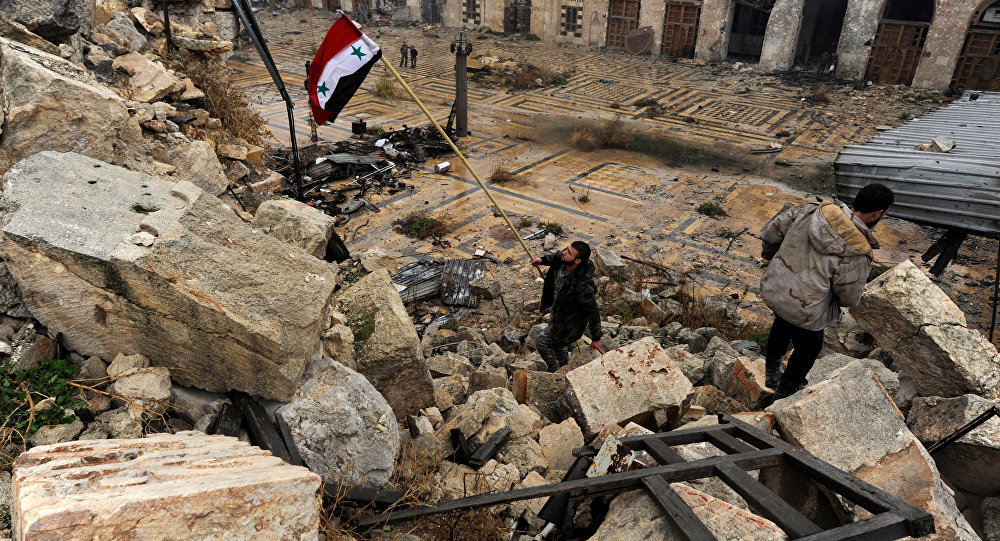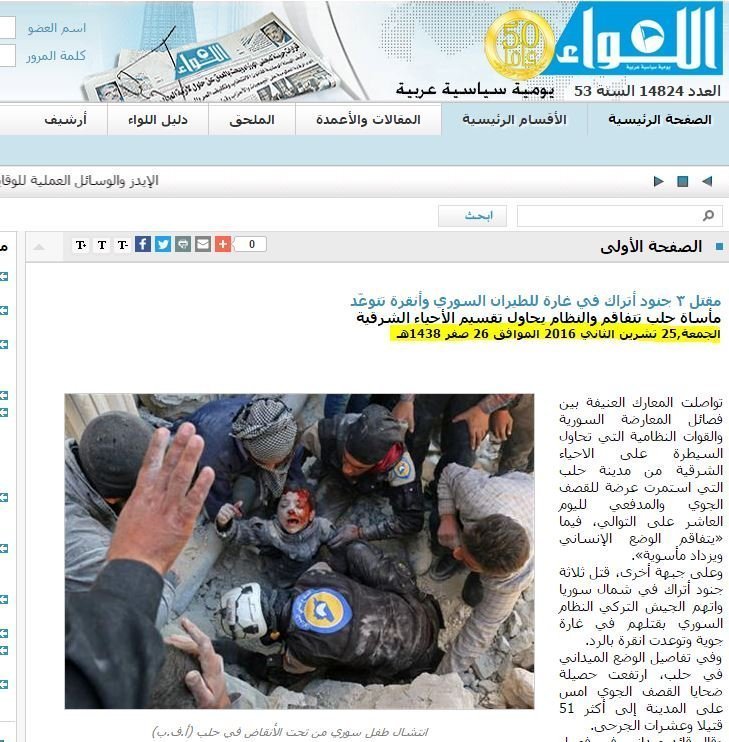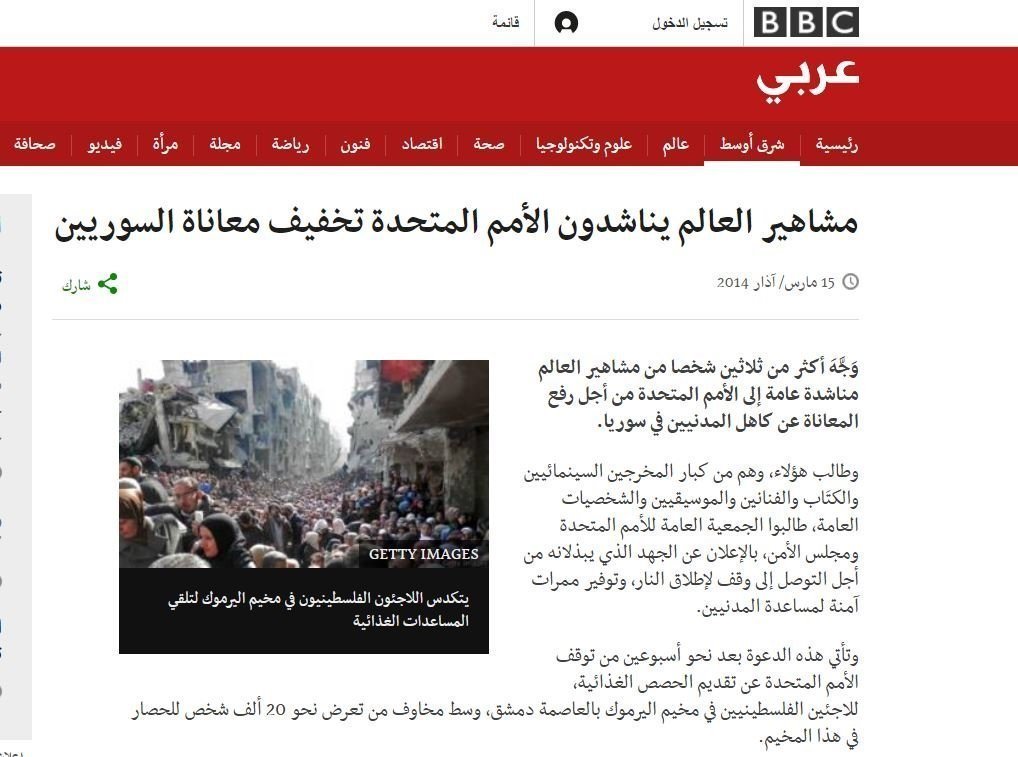
I de sidste få måneder, har Aleppo være en vigtig kampplads i Syrien, opslugt at en konflikt mellem regeringsstyrker og et antal oppositions- og ekstremistiske styrker.
I de sidste tre uger, har den Syriske hær og allierede militser befriet mere en 98% af områder i det østlige Aleppo ifølge det russiske genforeningscenter.
Visse nyhedsmedier og populistiske grupper på social netværkssider har indledt en hel informationskampagne mod de syriske regeringsstyrker i Aleppo, skriver en artikel Sputnik Arabisk
"De bruger billeder fra Gazastriben, såvel som billeder fra 2014 og 2015 som bevis på de "grusomheder", der begås mod civile i Aleppo af den syriske hær."
Kommentar: Delvist oversat fra ake images of horror in Aleppo spread by Saudi media, waging information War
"Known for its hardline anti-Assad stance, Saudi-owned broadcaster Al Arabiya released a news article on December 14 titled "non-stop coverage of the recent events in Aleppo in details."
The article contained a picture showing emergency workers of the so-called "White Helmets" pulling a Syrian kid out of a ruined building. The boy's face was covered with blood. However, journalists have repeatedly condemned the "White Helmets" for distributing lies and being engaged with al-Nusra Front.
The very same photo of "White Helmets" members with the same kid can be found on the website of the Aliwaa newspaper in an article dated November 25, 2016. This delivers a heavy blow to Al Arabiya's claims of "non-stop and relevant" coverage of the situation in Aleppo.

A noteworthy detail is that at first sight "Memories ツ ツ" seems to be a group publishing entertaining content on a number of topics. However, from time to time, it publishes fake news reports about violence against Syrian people, using fake photos.
Tens of thousands of followers perceive such information as relevant, without checking the facts or the pictures. They believe what they read and see and further distribute the information.
In the description of the above-mentioned post, the author addresses God: "Lord, we have lost all hope, except our hope for you. And we have lost confidence in everything, except for you. We are calling on you to save the people in Aleppo from disaster."
While the Syrian Army was liberating Aleppo and establishing safe corridors for its residents, the group on Facebook published a picture showing a large crowd of refugees with a city in ruins in the background.
This picture was used on the website of BBC Arabic on March 15, 2014 in an article headed "Celebrities across the world are calling on the UN to ease suffering of the Syrian people."
On December 13, "Memories ツ ツ" published another post calling for prayers for Aleppo. It received 3,000 likes, 1,000 reposts and a hundred comments. The post featured a picture of a woman crying over the bodies of alleged Syrian kids.
The same picture was used on July 21, 2014 by popular Arab-speaking Twitter blogger @MazenAlhddabi in a post about in an Israeli attack on the Gaza Strip, which took place in 2014.





Læserkommentarer
dig vores Nyhedsbrev